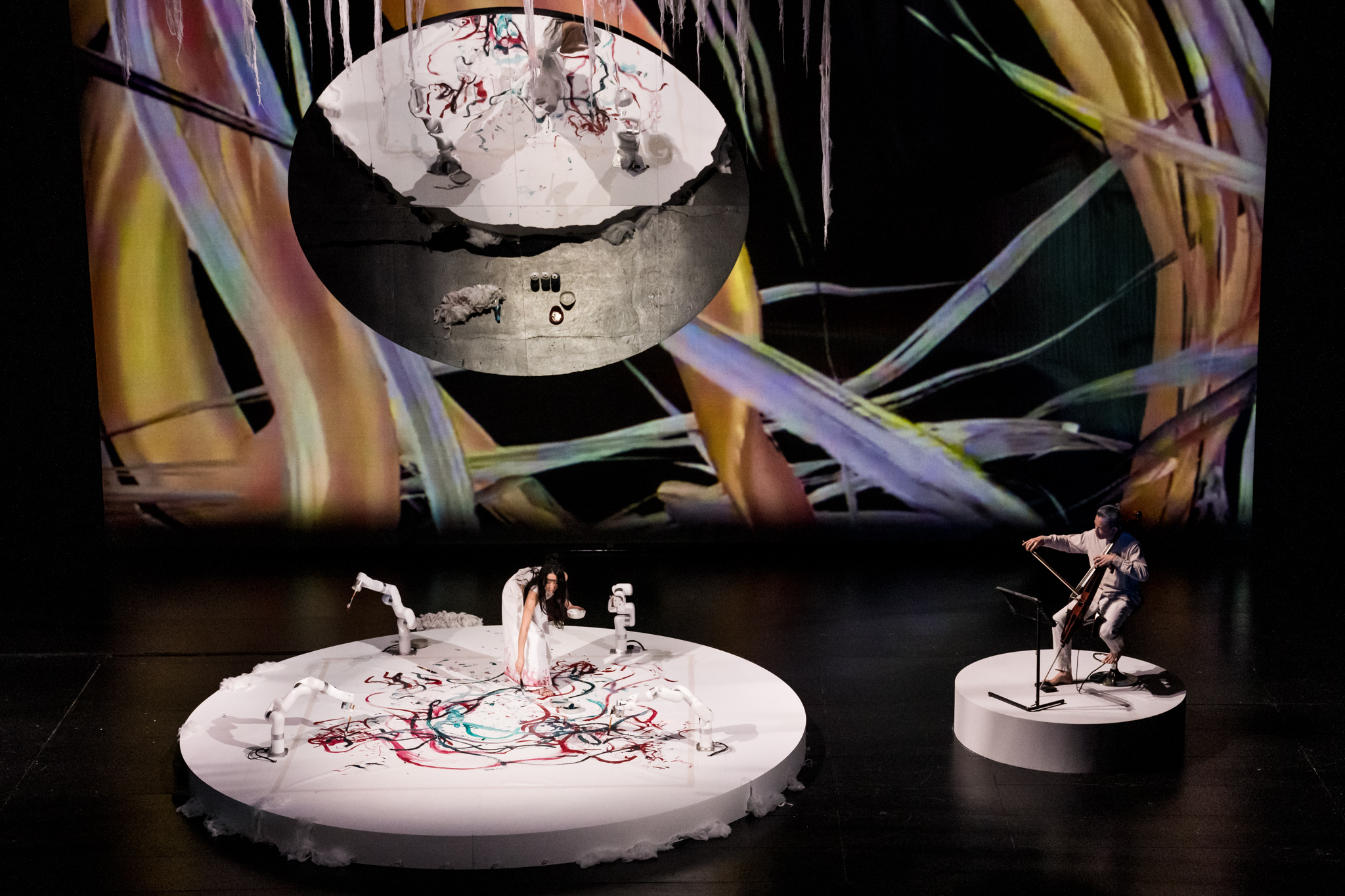Performance art can be perplexing. With the newest edition of the Singapore International Festival of Arts, the art form is emerging from its enigmatic shell to take center stage in the region.
I thought I knew contemporary art well. After working in a gallery, stints at a few museums, and at an art editorial, I thought I had a decent grasp of most art forms. But when I attended the Singapore International Festival of Arts or SIFA, I realized my experience of art on stage had up to this point, largely been boxed in with more traditional plays, musicals, and the occasional strings concert (as well as an improv phase). An epiphany rose to mind — that performing and performance art were totally different things. At the SIFA festival, you could not compare the performances to an experience of watching Hamilton or listening to a Vivaldi Concert.
This was contemporary art. This was water on stage in the opening show Angel Island, animatronics wielding paintbrushes, or the illusion of a bonfire made out of styrofoam and an electric fan. Seeing these various mediums work together on the opening weekend of the SIFA arts festival, it became clear that Singapore is becoming cemented as the vanguard of art in the region, and possibly the world.
The question of identity in Singapore is not a new one. In 1978, the late president Ong Teng Cheong, then Minister of Culture, was queried by Members of Parliament who lamented that Singapore was a “cultural desert” wrought by urbanization, as well as lackluster local television and radio programming. Since those many decades ago, the essence of Singapore can be described as a “hub” made multi-faceted by globalization. So naturally, the theme for the ongoing performing arts festival was “The Anatomy of Performance: Some People,” reflecting the spectrum of human experience.
Today, the festival combines the talent of artists in music, visual arts, and drama in contemporary theater that comments on present times and times past. The festival is collaborative — from blending media during the performance itself to the behind-the-scenes collaboration between facilitators, organizers, researchers, and our host Tate Anzur. The festival itself strives to be experimental, critically engaged, and participation-based with various communities.
Festival director Natalie Hennedidge described the creative boldness:
“It’s just like 1970s, downtown New York — something that you can’t put your finger on.”
She went further to say, “The city cradles the festival,” emphasizing a need to show the dynamic between Singapore and the world. As the director, Hennedidge chose to emphasize midcareer artists, giving them a wider platform to exhibit.
SIFA had its 2023 run from May 19 to June 4. Reflecting on the performances after the fact shows the dizzying possibilities of art opened up by the festival’s vision. You might remember Sukki Menon from the Netflix show “Singapore Social.” She went on to spearhead the legalization of burlesque shows in the country. In a conversation over lunch at the Stamford Arts Centre, Menon confirmed this evolution of art in Singapore as she said,
“Now more than ever is the year of freedom of expression.”
We go through a few of the striking SIFA shows on the first weekend, that testify to the possibilities of performance art opening up in the region.
The Outspoken Youth in “We Will Slam You With Our Wings”
Singapore’s system of education places a huge emphasis on the arts. We saw this when we visited the impressive specialized arts school SOTA (The School of the Arts), where we watched the performance of “Materia.” But we first encountered the art-focused youth in “We Will Slam You With Our Wings,” a performance of young female students mentored by Joanna Dudley.
In the atrium of the Victoria Theatre, at the center of the hallowed hall and neo-classical columns, we were taken by surprise when a group of girls began to chant, shout, and clap their hands, exclaiming statements about their female identity. It was almost unnerving, yet inspiring to see the radical movement made by young women.
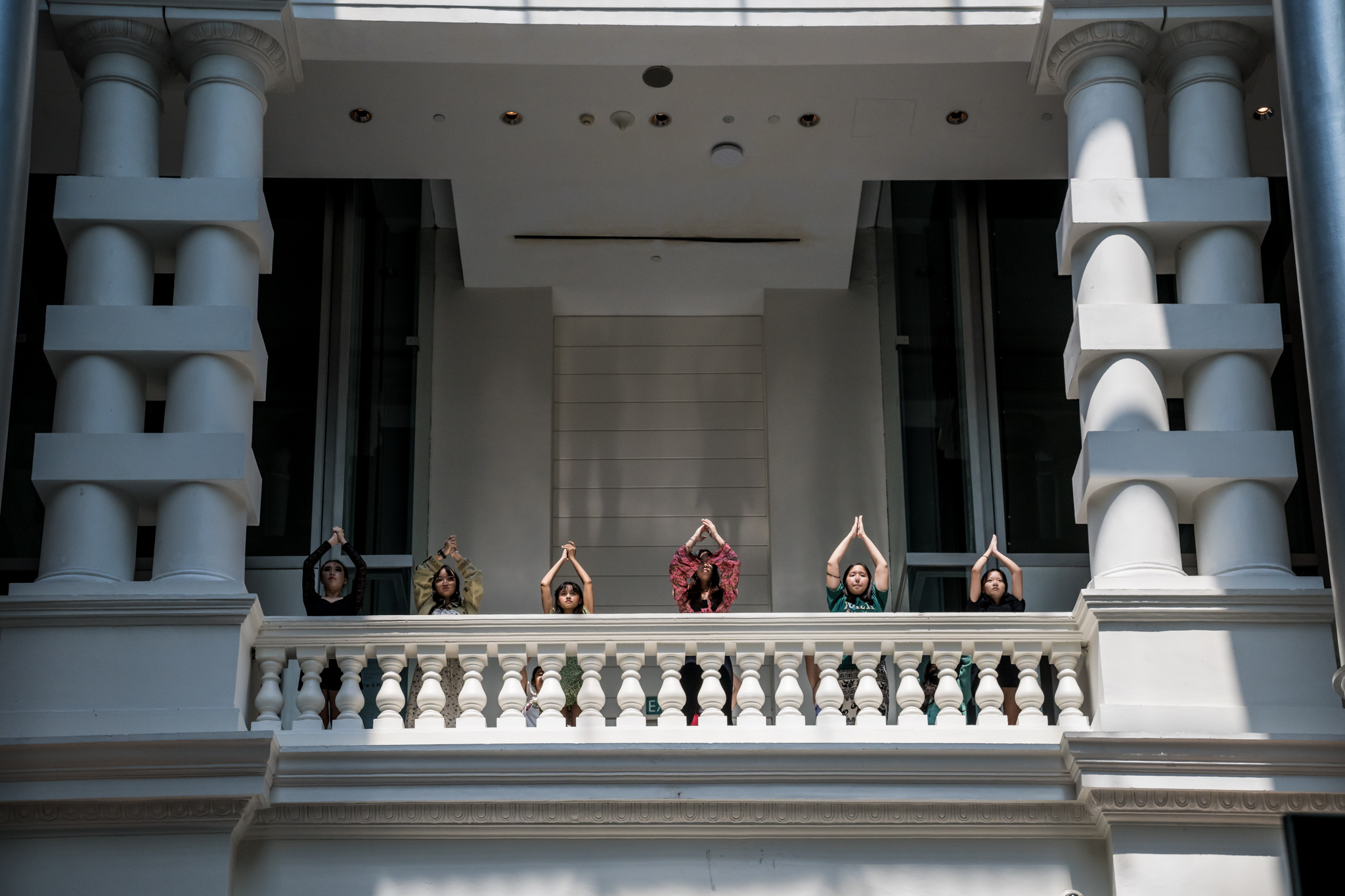
To complement the performance act were standing screens. While historical portraits of military figures are traditionally male, we saw modern digital images of young girls aged 8 to 16, standing in powerful stances and donning military-like regalia. They held serious expressions, yet there was an aura of lightness and play. Their figures shifted over operatic music by Tosca and Puccini. With reference to the male-dominated, warring past, the works connected to the young, feminist present in a show of strength, power, and togetherness.
A.I. and Nature Collide in “Realm of Silk”
Right now, the hot topics are both artificial intelligence and the urgency of climate change. So when the Chinese-born, Canadian-raised artist Sougwen Chung presented “Realm of Silk” at SIFA, we were mesmerized by the performance that melded inspirations from nature with animatronics.
The first word that usually comes to mind with art is visual art. And while SIFA focuses on performance art, this was one of the first performances that showed a somewhat traditional idea of painting – except the painting was done by robots.
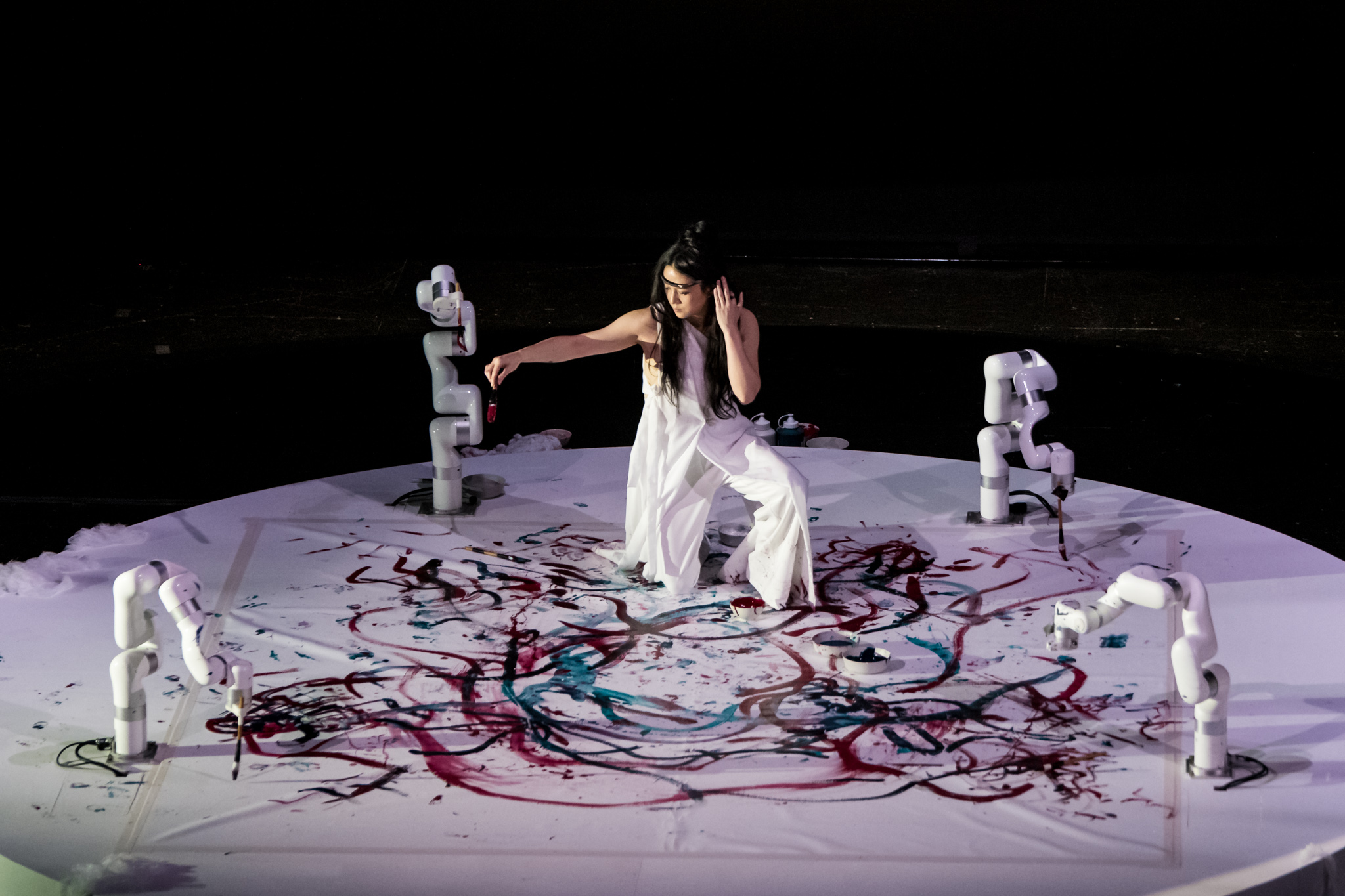
At the center of a circular platform were four robotic arms, meant to emulate the silkworm. On the ethereal set, Singapore’s master cellist Leslie Tan begins to play alongside electronic music. Chung put on a high-tech headband to help her manipulate the robot with brainwaves.
Moving around the stage, she presented the silkworms with bowls of paint. She seemed to treat the animatronics in a gentle, almost motherly manner, moving across the stage in a Gaia-like way, and flowing lightly, like silk. With help from Chung, the robots painted colored, abstract lines throughout the performance.
The mind-blowing “MATERIA”
Italian artist Andrea Salustri brought his award-winning performance “MATERIA” to the SOTA Theater. He demonstrated the possibilities of polystyrene (styrofoam), in a stunning presentation of the plastic.
The artist, who has a background in juggling, transformed the mundane with a vintage electric fan that defied gravity to levitate a styrofoam ball. There were moments when he made the plastic boards hover, the tiny balls fly into a fire-like explosion or flow like ocean waves. The music had an almost textural, scratching sound. To end, Salustri created an apocalyptic experience, with intense strobe lights that tricked the eye into live-image stills of the artist and the plastic. The stage was an absolute mess afterward, but Salustri reassured the plastic would be recycled and brought back with him to Berlin.
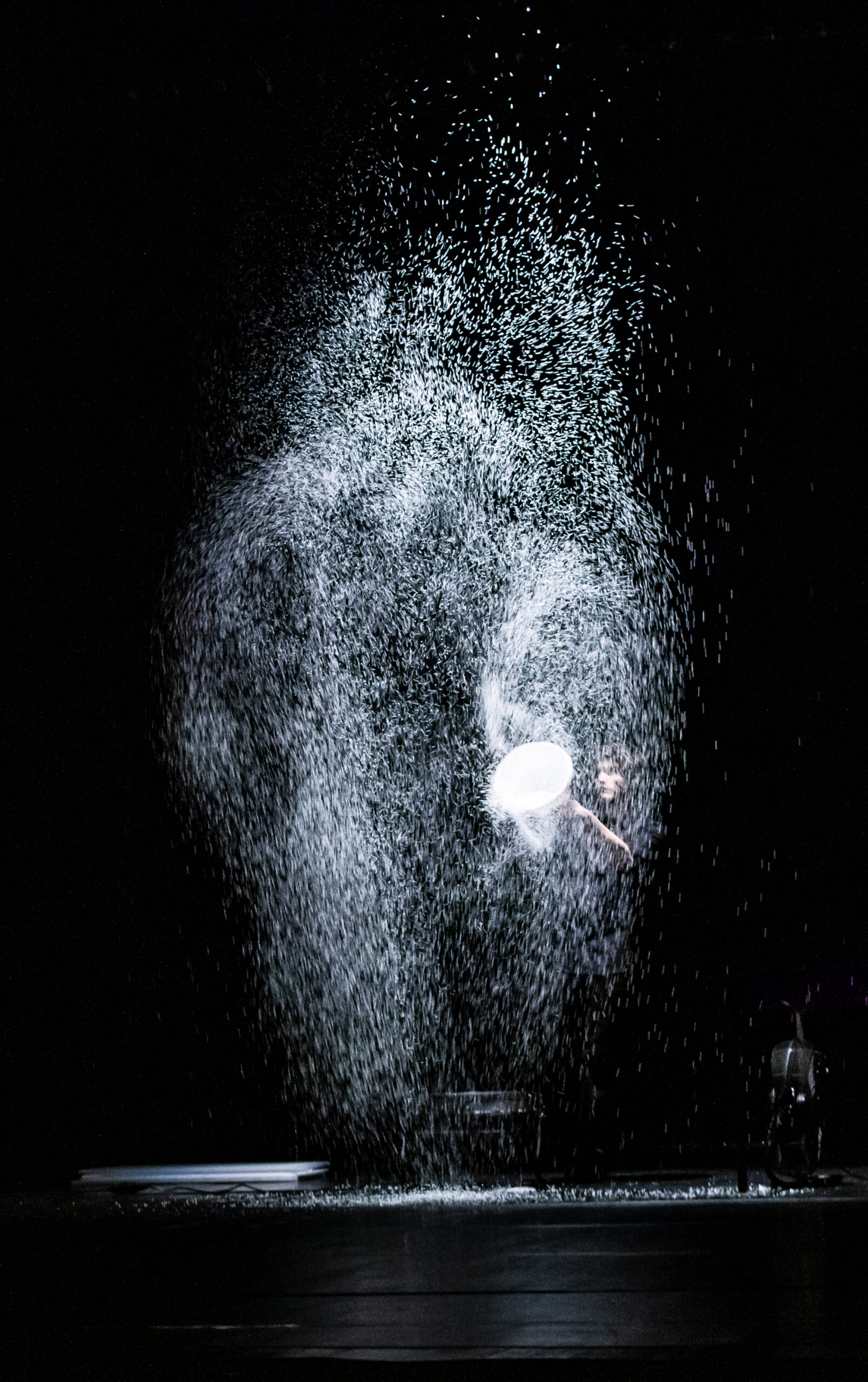
In a talk after the show, Salustri explained his discipline and research to achieve such millimeter-like precision. Ultimately, his ingenious choreography of plastic shapes and the artist’s body transformed the way of thinking about a material like styrofoam.
“There is No Future in Nostalgia”
On a tour in the old House of Parliament, now The Arts House, I pulled out a book in the library by Robin Loon, called “Singapore Theatre: Contexts and Conditions.” He cited the sociologist Chua Beng Huat, who wrote in 2004, “Art haunts the state that which seeks to harness it.” So what does this mean in the context of Singapore?
“The Vault: Past Perfect” was a group show part of SIFA X, the alternative and experimental side of the festival. It was performed in the charming, blue-hued Centre 42 space on Waterloo Street. Outside were both veterans and young faces from the local theater community. They came together to munch on iced gems and other 90s snacks.
The show consisted of four established actors as they re-told and reflected on their lives as theater kids during the 1990s. They asked questions with their 20/20 hindsight, wondering how perfect was the past, really? The show was conceptualized by Robin Loon and Casey Lim and co-created with Nelson Chia, Oniatta Effendi, Serene Chen, Tan Kheng Hua, and Lim Shi-An.
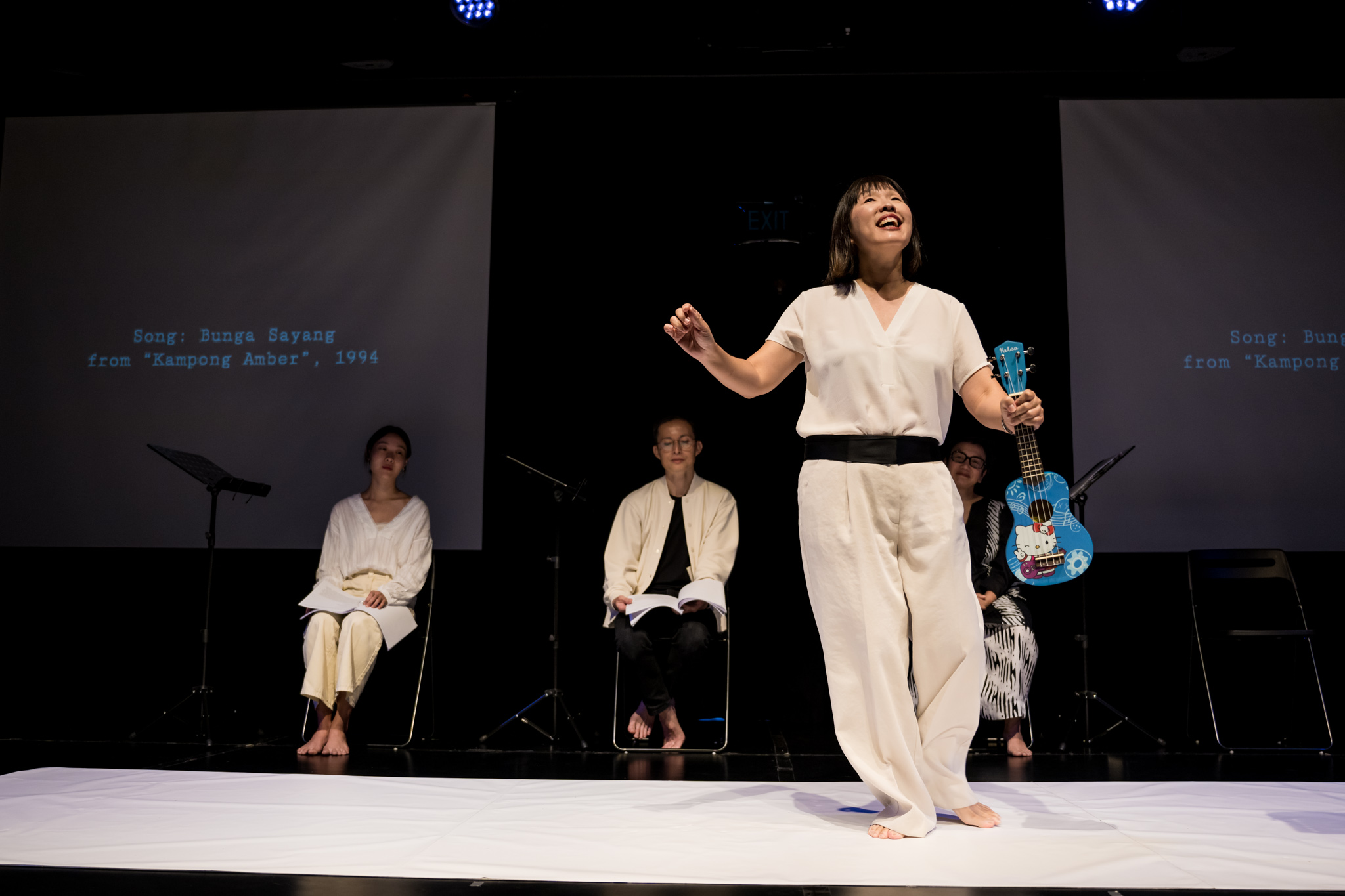
First up was a virtual appearance from Tan Kheng Hua, one of the actresses from Crazy Rich Asians. She spoke in a conversation on Zoom with her daughter Lim Shi-An. The mother and daughter pair reminisced on Tan’s past projects. One reference that stood out was “Mergers and Accusations” — a 90s play on the double life of an ambitious lesbian lawyer in the conservative Singapore culture. “Weren’t you scared?” her daughter asked, to which she replied, “Of course!” As she expressed her fear during the 90s of losing their license or being shut down, but also that, “there’s a great pleasure when there’s a lightness in acting”
Then there was the monologue by Nelson Chia. He reflected on the value of 90s nostalgia now, and how the era was spent drafting the playbook of SG theater. In particular, he reminisced on the relationship with his mentor William Teo, as he spoke with deep fondness while recalling the cultural educator’s thought-provoking lessons.
Next was Serene Chen, an actress, host, voice artist, and lecturer. She recalled her time working with the greats as a young theater student gracing the chorus line. A poignant moment was when Chen picked up a bright blue ukulele to sing a song from the 1994 play Kampong Amber, and as the audience began to sing along.
The last performance before we had to slip out to catch our flight was by Oniatta Effendi. On stage, she mimed an invisible wooden chest to go through experiences of past performances. Her script was multi-lingual, while expressing the honesty of her emotions during her theater adventures in the 1990s — from fear of plays being shut down and disapproval of the Malay community to doing research work in Geylang, the red light district on the fringes of Singapore.
“There is No Future in Nostalgia” was up-front about life behind the scenes. Simply put, it was “just a bunch of actors with their words and characters.” Each actor touched on the cultural gut of Singapore’s identity, showing how the 90s was a definitive period of art-making, and how each actor gave their all.
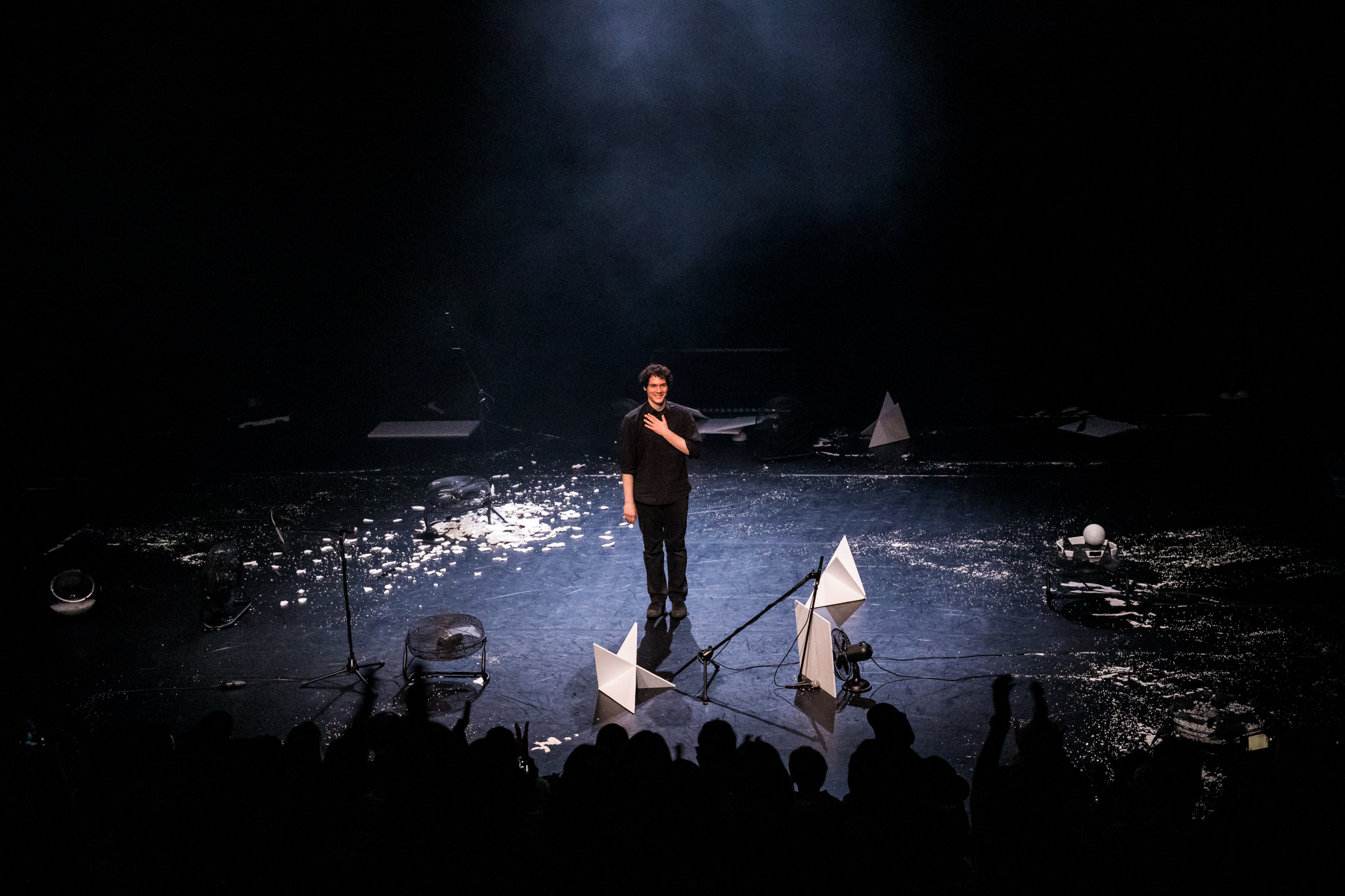
Throughout the festival, the theaters were continually packed, contesting the vibrant culture of performing arts in Singapore. Each SIFA performance showed the artists in a trance, and the audience responded by becoming entranced. “The Anatomy of Performance: Some People” did more than show that performance art is growing as a genre, but painted a moving spectrum of human life and experience.
The Singapore International Festival of Arts ran from May 19 to June 4, 2023, and runs with new performance art pieces annually.

